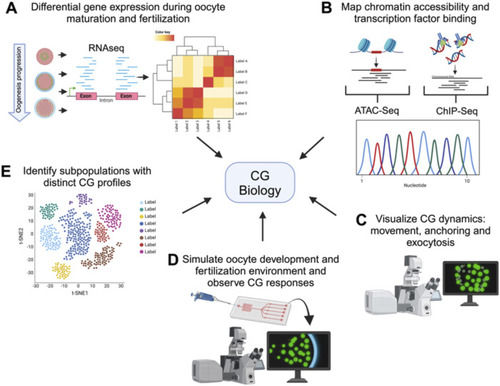FIGURE 3
- ID
- ZDB-FIG-250214-35
- Publication
- García-Castro et al., 2025 - Phenogenetics of cortical granule dynamics during zebrafish oocyte-to-embryo transition
- Other Figures
- All Figure Page
- Back to All Figure Page
|
Comprehensive techniques for studying cortical granule biology. Holistic view of the tools available to study the processes involved in CG biology. The figure illustrates various advanced techniques used to examine different aspects of CG biology. Each technique provides unique information into the CG lifecycle, from biosynthesis to exocytosis. |

